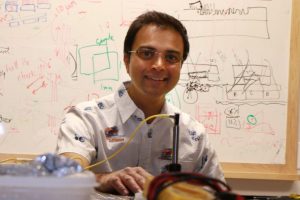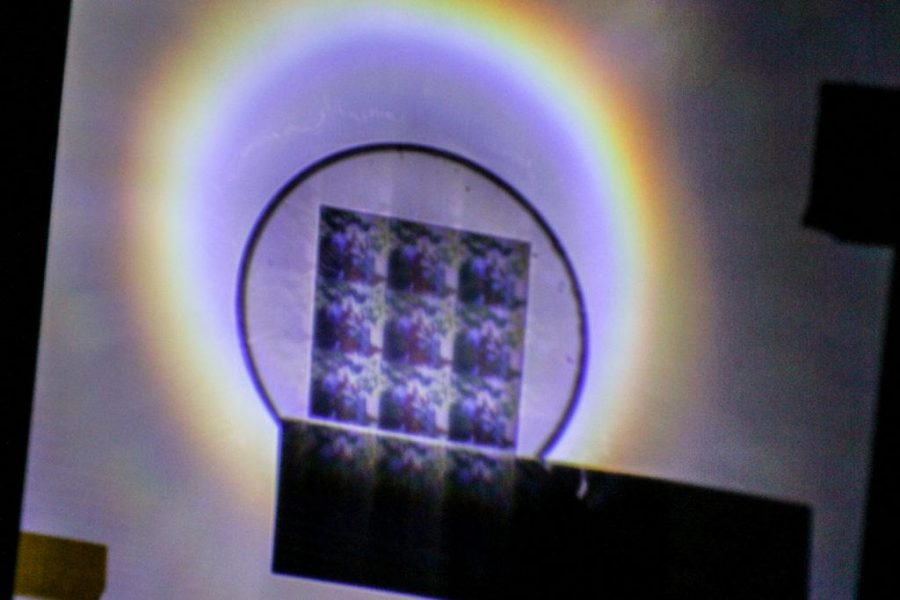University of Utah associate professor Rajesh Menon and his team of electrical and computer engineers have discovered a way to create a brighter, more vivid and realistic hologram. Because of the new and improved characteristics of these holograms, Menon said the R2-D2 and Chewbacca chess game from the movie “Star Wars” could be a possibility in the future.
Compared to conventional holograms, Menon and his team are able to project full-color 2-D and 3-D holograms that are also inexpensive to produce. Menon said this development came after two key innovations.
“First, we had to come up with a new algorithm to design the micro and nano-scale geometry of the device that will provide the appropriate holographic function,” Menon said. “Second, we had to develop a fabrication process that allows us to manufacture the device. The latter was achieved in the U’s nanofabrication facility. Our team has significant expertise in both computational techniques that simulate how light interacts with matter, but also in nano-scale fabrication. We combined these two skill-sets to create the new holograms.”
Conventional holograms work only by operating just one color, which gives off a dimmer and low-lit appearance. With this in mind, Menon and his team achieved high quality holograms by using all colors. This ensures that much of the light that would normally get absorbed gets reflected back to the viewer instead.
The team turned to fundamental physics to develop a way to view holograms at any angle.
“This is not possible with conventional holograms,” Menon said. “As you might notice with holograms used in credit cards, as you tilt them, the colors change.”

Menon’s prior achievements include designing what are described as an “invisibility cloak for electronics” and “thin, flat camera lenses”. With every enterprise, there are new issues that need to be explored and resolved, Menon said.
“Each project is different in terms of the problems we are addressing and their corresponding solutions,” Menon explained. “The common thread in all these projects is our careful attention to not only the theoretical understanding of how light interacts with materials, but also the practicalities of how to make and apply these devices. We tend to think early on about possible applications and possible problems that one might face when trying to implement whatever technology we are working on.”
With aspirations of eventually expanding their holograms to other areas such as advertising and even amusement park rides, Menon described their goals moving forward.
“We have already expanded our work to full 3-D static holograms. We need to do further work to make dynamic holograms. This is in progress.”
h.kirkwood@dailyutahchronicle.com


